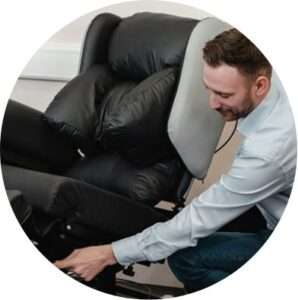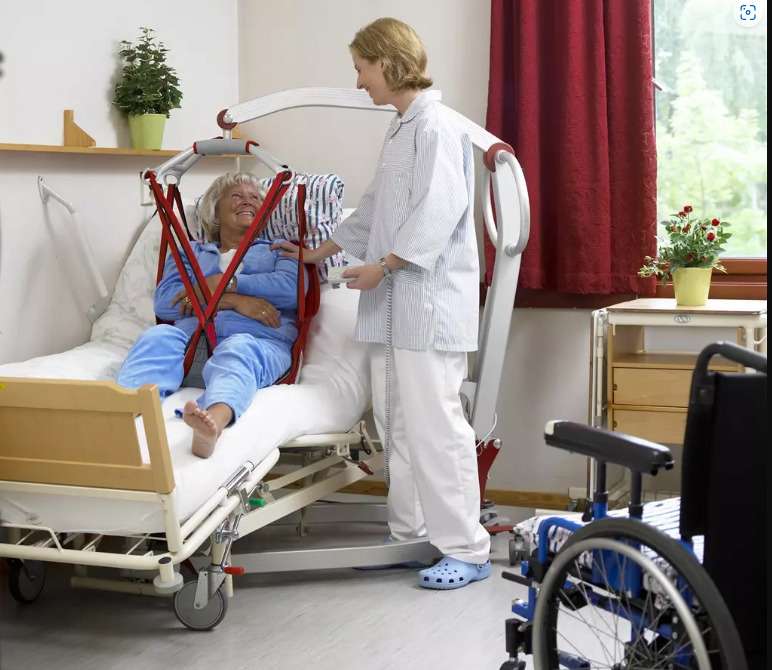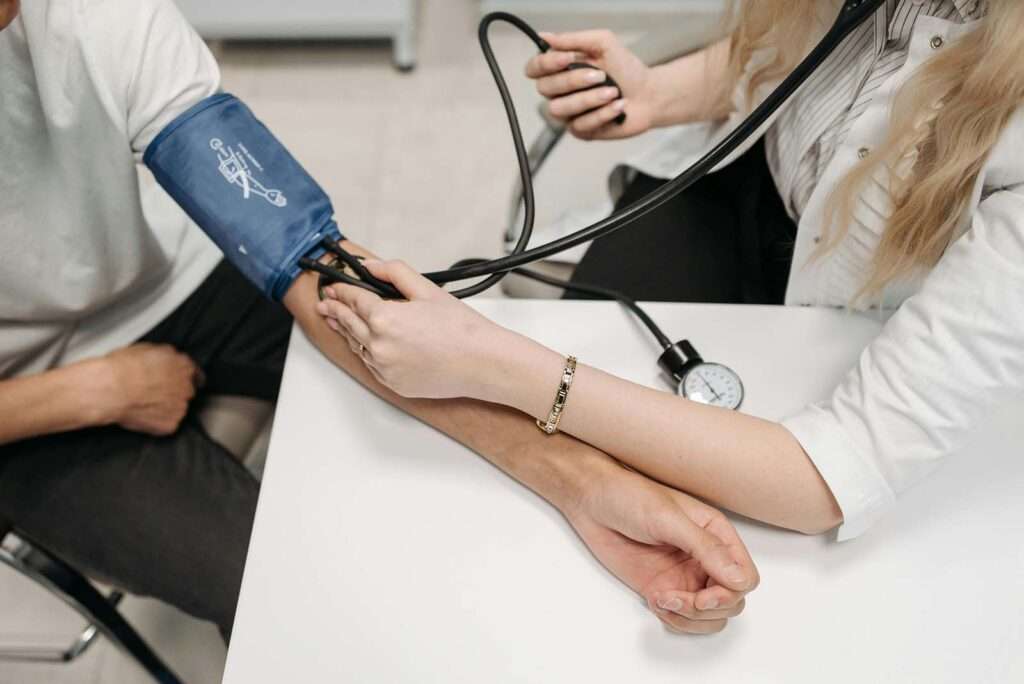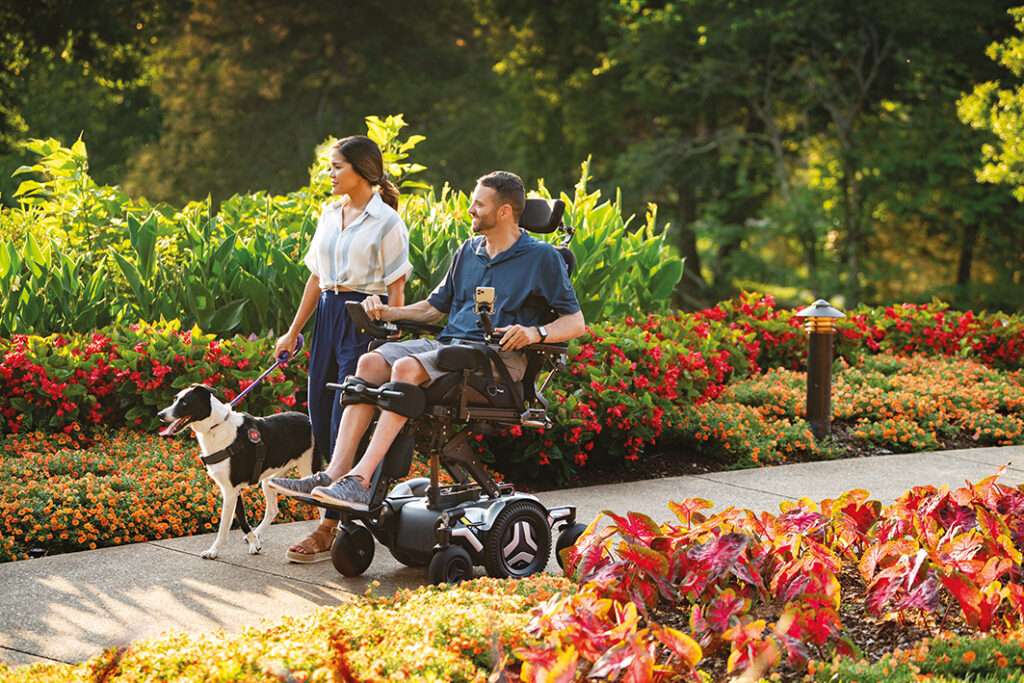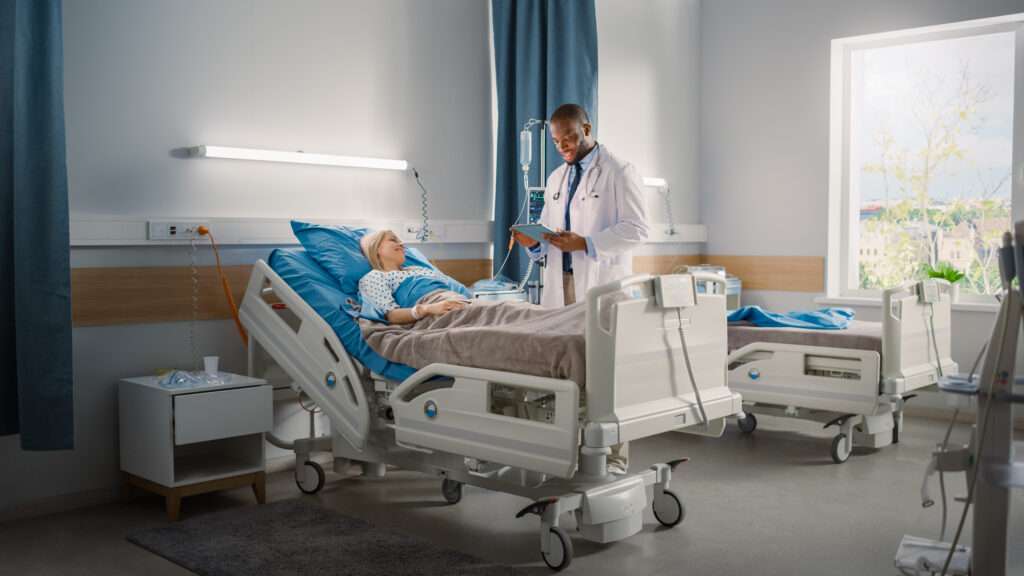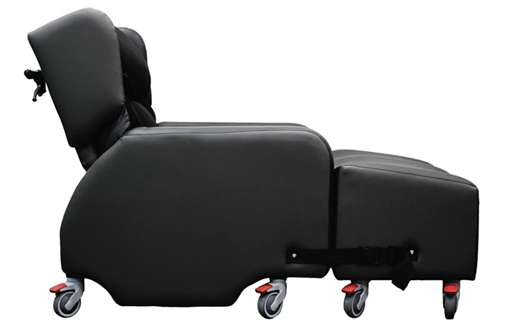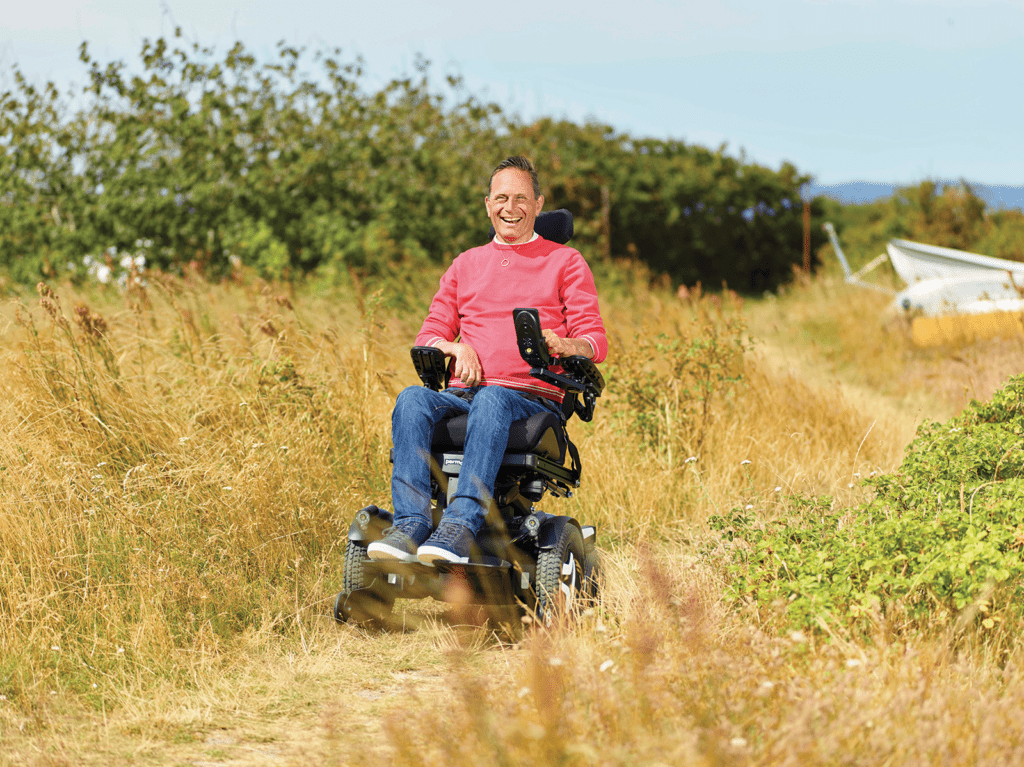This article analyses how the Raizer lifting chair squares up against the mobile hoist for lifting a fallen person.
Mobile hoists are invaluable devices for lifting and transferring individuals who may have fallen or are otherwise unable to move independently. They come in various designs, and can be used in a wide range of settings, from hospitals to care homes and private homes.
Jump straight to...
The Raizer Lifting Chair
The Raizer 2 Lifting Chair is a motorised device that assembles around the patient and lifts them to a seated position within 60 seconds. It is battery-powered and can be purchased with a headrest.
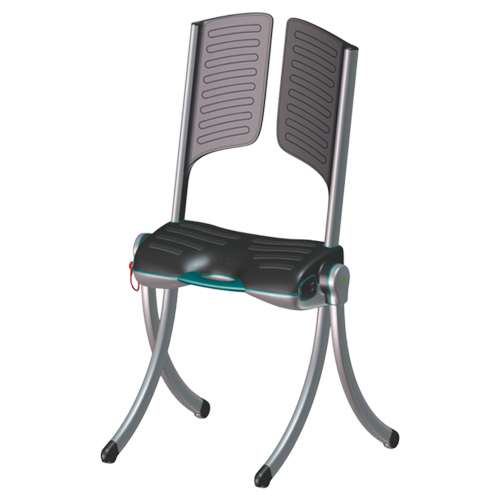
How It Works
- Slide the seat unit underneath the patient’s legs, with the seat surface as close to their posterior as possible.
- Push the backrest paddles into the top of the seat unit on both sides
- Slide the four leg pieces into the other slots (all leg pieces are the same)
- Fasten the lap belt over their hips to keep them secure during the lift
- Turn the seat unit on (will light up green) and remove the handset
- Press the up arrow on the handset to lift the patient to a sitting position
- Unfasten the lap belt and help the person to a standing position
Pros
- The Raizer only requires one person to operate, so no special training or manual handling skills are required.
- The Raizer sets up and dismantles within seconds and performs a 60-second lift.
- No manual handling is involved, significantly reducing the risk of physical strain and injury for both carer and patient.
- All the parts fit neatly into two separate carry cases, which are lightweight and portable.
Cons
- The Raizer has a 23 stone (150kg) weight limit, so is not suitable for bariatric patients.
- At least 35cm of space is needed either side of the patient to assemble the back and legrest sections
- There is a minimal risk of entrapment at the beginning of the lift, although this is very rare.
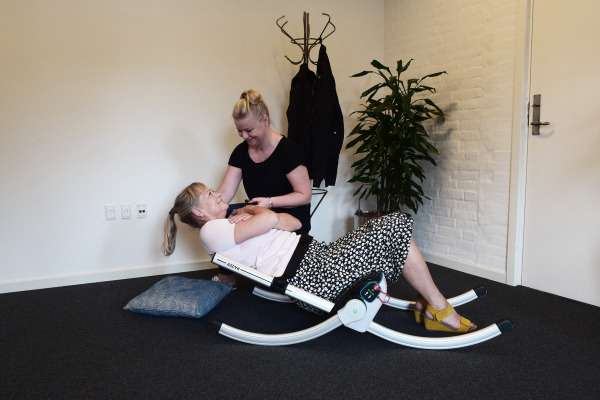
Raizer lifting chair
Mobile Hoist
Mobile hoists, such as the Smart 150 folding hoist are portable lifting devices that lift someone in a sling and move them on wheels from one place to another.
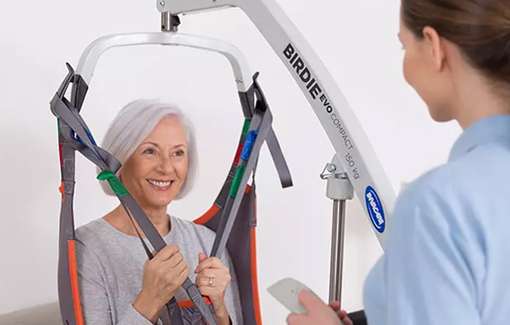
How It Works
To use a mobile hoist to lift a fallen person, the first step is to ensure that the lift is properly set up and positioned correctly. This may involve adjusting the height of the lift and positioning the person on a lifting sling that is attached to the hoist. Once the person is secure on the sling, the hoist can be activated, lifting the person off the ground and transferring them to another location.
- Bring the person’s arm across their chest.
- Assist them to bend their legs
- Ask them to look in the direction of the roll and roll them towards you onto their side
- Fit the sling at one side of the body, easing the bottom edge of the sling under the persons side and roll them onto their back.
- Check the sling is fitting correctly (equal material left / right and reaching from tail bone to top of shoulders (or head if sling has head support). If not, you will need to roll the person again to adjust the sling.
- If using a general purpose sling with leg straps (as in the picture),bring the straps between the persons’ legs (if looped sling, feed one leg strap through the other as in the picture)
- Bring over the profiled bed or chair which the person is being transferred to.
- Bring in the hoist, at an angle to the patient, one hoist leg under the thighs and the other hoist leg alongside the head and body of the patient.
- Attach the loops of the sling onto the hoist, the loops chosen will be the ones that can be applied without pulling the patient from the floor.
- Raise the patient from the floor, supporting the persons head, if moving onto a bed, place a sliding sheet at the heals to prevent shearing when being lowered into bed.
- When lowered into bed or chair, if required, reposition the loops of the sling to raise patient again and adjust lying / seating.
Pros
- Mobile hoist lifts are designed with safety in mind, featuring multiple safety mechanisms to prevent accidents and injuries.
- Hoist operators are trained to use the lift properly and to follow strict safety protocols to minimize the risk of injury to both the patient and the operator.
- Can be used to lift and transfer individuals from a seated or lying position, making them ideal for individuals with limited mobility or those who are unable to stand
- Allow individuals to be lifted and transferred between different locations, from a bed to a wheelchair or other mobility aid.
Cons
- Investment in staff training, which restricts who is able to operate the hoist
- At least 2 users are needed to operate
- Mobile hoist lifts require a significant amount of space to operate safely and effectively.
- Using a mobile hoist lift can take more time than other transfer methods
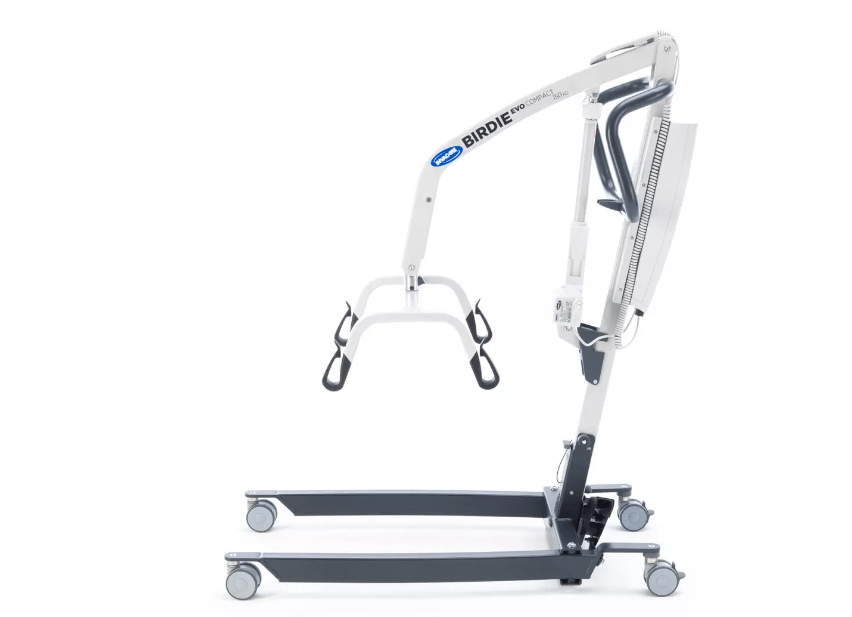
Mobile hoist
Summary
When a person falls, there are several factors to consider when deciding on the best way to lift and transfer them. One of the most important is the individual’s weight and mobility. If the person is unable to move at all or is significantly overweight, a mobile hoist lift may be the safest and most effective option.



